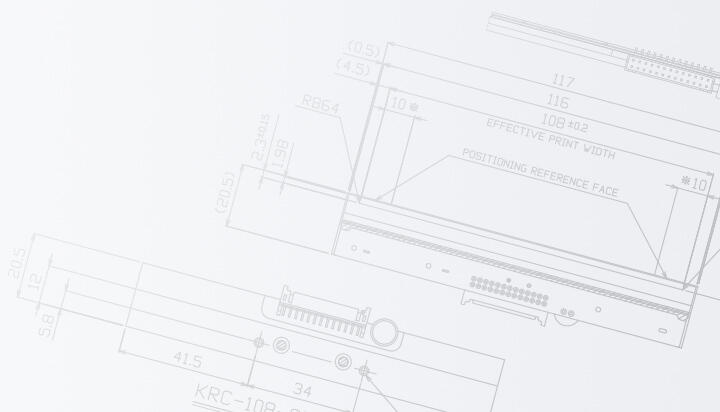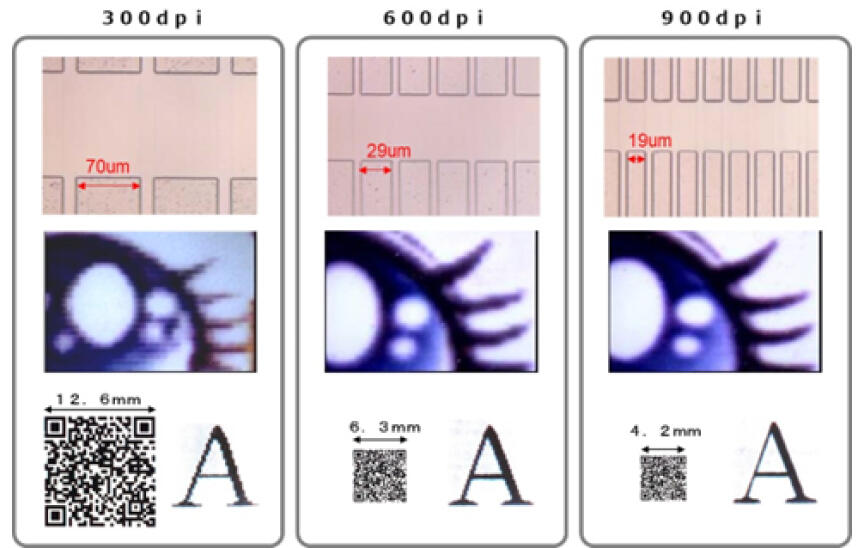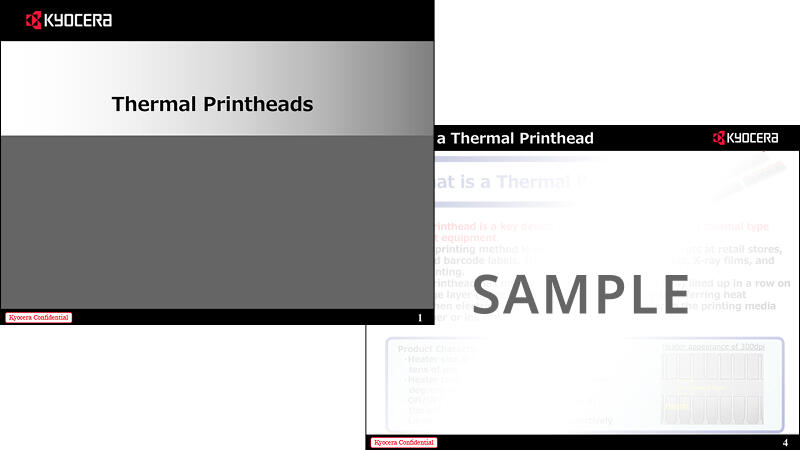
Features of Thermal Printheads
Introducing Kyocera's unique thermal print head technology.
Heater size can be formed at the level of several tens of μm
- Kyocera's proprietary technology makes it possible to form heaters as fine as several tens of microns.
- Several hundred heaters (dots) can be installed within an inch(25.4mm).
- By providing many heaters in one inch (high resolution), it is possible to print microscopic characters, 2D codes, and sharp photographs.

Heater temperature can rise to several hundred degrees celsius almost instantly
- The heater heats up to several hundred degrees Celsius in an instant in the order of microseconds.
- Thermal printheads need to heat the print media while feeding it, so it is essential to raise the temperature to a high level instantaneously in a short period of time.
ON/OFF of the heater can be controlled in the order of μsec
- Heating => cooling => heating => cooling... can be repeated by turning on/off the heater in microsecond order.
- Heater design and heating control allows control of any temperature.
- The thermal print head forms (prints) images and characters based on digital data one line at a time while conveying the print media.
Because the reproducibility of the print dots from digital data is required, it is essential to turn the heater on and off in a short period of time.
Multiple heaters lined up can heat selectively
- All heaters installed are independent of each other, and heating control allows individual heaters to generate heat or not.
- Thermal printheads achieve thermal control of heaters in response to external signals by using a dedicated driver IC.
It is necessary to selectively heat any heater to form (print) images and characters.
Download Documents for Kyocera's Thermal Printheads
This document summarizes the detailed mechanism and structure of thermal printheads.
